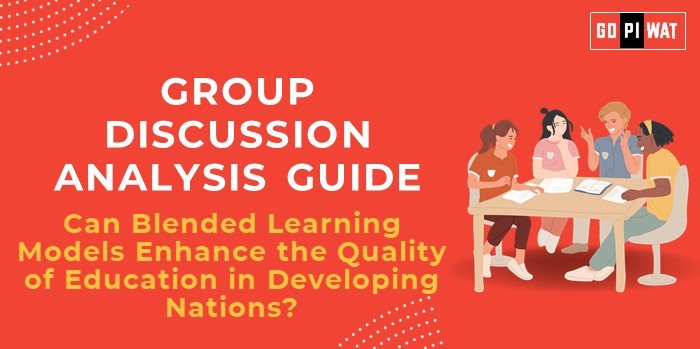📚 Can Blended Learning Models Enhance the Quality of Education in Developing Nations?
🌟 Introduction to the Topic
Blended learning, combining traditional face-to-face methods with digital and online resources, is transforming education worldwide. Its potential to bridge education gaps in developing nations, where resources are limited, is gaining significant attention.
Emerging as a practical solution during the COVID-19 pandemic, blended learning integrates the flexibility of digital tools with the foundational aspects of physical learning environments. This model promotes inclusivity, personalized education, and scalability.
📊 Quick Facts and Key Statistics
📶 Internet Penetration in Developing Nations (2023): 57% average; critical for enabling blended learning.
📚 UNESCO Reports: Over 244 million children are out of school globally, with blended models offering access solutions.
🇮🇳 India’s PM eVIDYA Program: Reached 137 million students during the pandemic through digital mediums.
👥 Stakeholders and Their Roles
- 🏛️ Governments: Formulate policies, provide funding, and build infrastructure.
- 💻 Private Sector: Develop and implement EdTech tools and platforms.
- 🏫 Educational Institutions: Integrate models into curricula, train educators, and evaluate outcomes.
- 🌐 NGOs/International Organizations: Advocate for inclusive education and mobilize resources.
- 👨👩👧 Parents/Students: Adapt to and leverage blended learning tools for enhanced learning outcomes.
🎯 Achievements and Challenges
✨ Achievements:
- 📈 Scalability: Programs like Khan Academy offer content to millions.
- 💸 Cost Efficiency: Digital resources reduce material costs.
- 📚 Improved Learning Outcomes: A World Bank study shows a 20% improvement in comprehension with blended models.
- 🌍 Inclusive Access: Mobile-based learning caters to rural and underprivileged regions.
⚠️ Challenges:
- 📶 Digital Divide: Unequal access to technology widens educational gaps.
- 👩🏫 Teacher Training: Lack of expertise in digital tools hinders effective implementation.
- 🎭 Cultural Barriers: Resistance to technology in traditional educational settings.
🌍 Global Comparisons:
🇫🇮 Finland: Successfully integrates digital tools, leading to high PISA scores.
🇰🇪 Kenya: Solar-powered tablets in rural areas enhance literacy rates.
💡 Case Study:
- 🇮🇳 India’s DIKSHA Platform: Offers multilingual digital content for teachers and students.
🗣️ Structured Arguments for Discussion
- ✔️ Supporting Stance: “Blended learning is the future of education in developing nations, bridging the digital and physical divide while ensuring scalability and access.”
- ❌ Opposing Stance: “Without addressing the digital divide and cultural challenges, blended learning risks increasing inequality in education.”
- ⚖️ Balanced Perspective: “Blended learning offers immense potential but requires targeted interventions to overcome access and implementation barriers.”
💡 Effective Discussion Approaches
🚀 Opening Approaches:
- 📊 Global Statistic: “The global EdTech market, valued at $254 billion, highlights the rapid adoption of blended learning.”
- 📖 Local Success Story: “India’s DIKSHA platform reached millions during the pandemic, showcasing the potential of blended learning.”
🛡️ Counter-Argument Handling:
- 💰 Acknowledge technological challenges and propose scalable solutions like public-private partnerships or low-cost hardware.
🔍 Strategic Analysis of Strengths and Weaknesses
- ✔️ Strengths: Accessibility of content; flexibility in learning schedules.
- ❌ Weaknesses: Dependence on infrastructure; limited digital literacy.
- 🌟 Opportunities: Leveraging mobile-first strategies; expanding public-private partnerships.
- ⚡ Threats: Cybersecurity risks; resistance to change in traditional systems.
🎓 Connecting with B-School Applications
📈 Real-World Applications: Analyzing ROI in EdTech initiatives for finance projects; building business models for affordable education platforms.
🤔 Sample Questions:
- What strategies can make blended learning viable in rural areas?
- Evaluate the role of mobile technology in educational equity.
✨ Insights for B-School Students:
- Explore digital literacy projects during internships.
- Research policy implications of blended learning.


